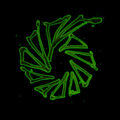Template:Selected anniversaries/December 2: Difference between revisions
No edit summary |
No edit summary |
||
| Line 37: | Line 37: | ||
||Robert Palmer Dilworth (December 2, 1914 – October 29, 1993) was an American mathematician. His primary research area was lattice theory; his biography at the MacTutor History of Mathematics archive states "it would not be an exaggeration to say that he was one of the main factors in the subject moving from being merely a tool of other disciplines to an important subject in its own right". He is best known for Dilworth's theorem (Dilworth 1950) relating chains and antichains in partial orders; he was also the first to study antimatroids. Pic: https://www.geni.com/people/Robert-P-Dilworth/6000000035405400337 | ||Robert Palmer Dilworth (December 2, 1914 – October 29, 1993) was an American mathematician. His primary research area was lattice theory; his biography at the MacTutor History of Mathematics archive states "it would not be an exaggeration to say that he was one of the main factors in the subject moving from being merely a tool of other disciplines to an important subject in its own right". He is best known for Dilworth's theorem (Dilworth 1950) relating chains and antichains in partial orders; he was also the first to study antimatroids. Pic: https://www.geni.com/people/Robert-P-Dilworth/6000000035405400337 | ||
||1924: Hugo von Seeliger born ... astronomer, often considered the most important astronomer of his day. | ||1924: Hugo von Seeliger born ... astronomer, often considered the most important astronomer of his day. Pic. | ||
|File:Hilbert_curve.gif|link=Hilbert Curve (nonfiction)|1924: [[Hilbert curve (nonfiction)|Hilbert curve]] predicts that ''[[The Dark Side of the Moon (nonfiction)|The Dark Side of the Moon]]'' will be released in 1973. | |File:Hilbert_curve.gif|link=Hilbert Curve (nonfiction)|1924: [[Hilbert curve (nonfiction)|Hilbert curve]] predicts that ''[[The Dark Side of the Moon (nonfiction)|The Dark Side of the Moon]]'' will be released in 1973. | ||
Revision as of 07:38, 21 May 2019
1409: The University of Leipzig opens. Famous future alumni will include Leibniz, Goethe, Ranke, Nietzsche, Wagner, Angela Merkel, Raila Odinga, and Tycho Brahe.
1831: Mathematician Paul David Gustav du Bois-Reymond born. He will work on the theory of functions and in mathematical physics.
1939: Physicist and crime-fighter Enrico Fermi publishes evidence that nuclear weapons will be vulnerable to crimes against chemistry.
1942: During the Manhattan Project, a team led by Enrico Fermi initiates the first artificial self-sustaining nuclear chain reaction.
1966: Mathematician and philosopher L. E. J. Brouwer dies. He made contributions to topology, set theory, measure theory and complex analysis; and he founded the mathematical philosophy of intuitionism.
1987: Physicist, astronomer, and cosmologist Yakov Borisovich Zel'dovich dies. He played a crucial role in the development of the Soviet Union's nuclear bomb project, associated closely in nuclear weapons testing to study the effects of nuclear explosion from 1943 until 1963.
2016: Advances in zero-knowledge proof theory "are central to the problem of mathematical reliability," says mathematician and crime-fighter Alice Beta.
2017: Signed first edition of Green Spiral sold for an undisclosed amount to "a prominent Gnomon algorithm theorist, a longtime resident of New Minneapolis, Canada."






